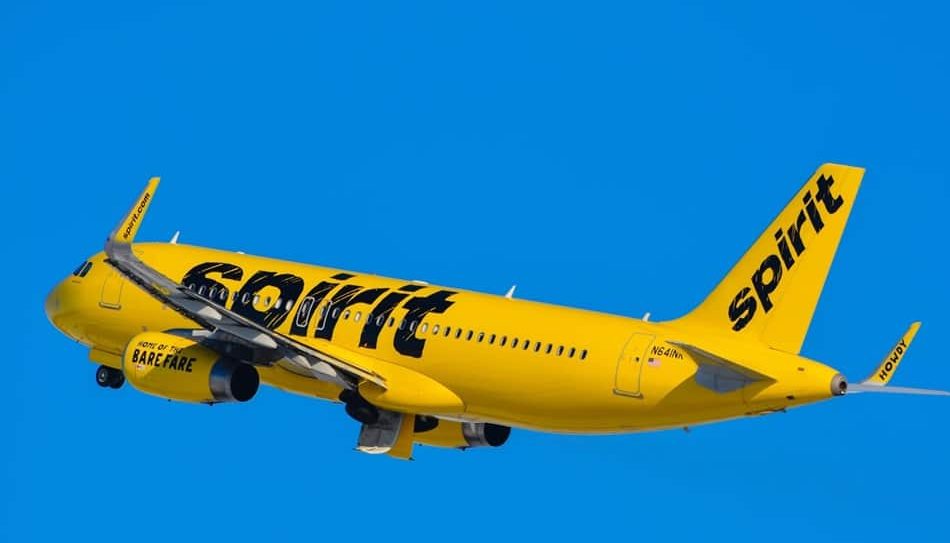Spirit Airlines, renowned for its ultra-low-cost fares, has filed for Chapter 11 bankruptcy protection following a series of financial setbacks.
This marks the first bankruptcy filing by a major US airline in over a decade.
Spirit is fighting significant debt, operational challenges, and a blocked merger with JetBlue Airways.
The airline, which last reported an annual profit in 2019, announced plans to restructure its debts and secure funding to sustain operations during the bankruptcy process.
Spirit aims to emerge from Chapter 11 by the first quarter of next year.
Despite its financial troubles, Spirit has reassured customers tickets, credits, and loyalty points will remain valid and usable.
In a statement accompanying the bankruptcy announcement, Spirit’s CEO Ted Christie framed the move as a “vote of confidence” in the airline’s long-term strategy.
This optimism comes despite Spirit’s struggles to maintain its footing in a fiercely competitive post-pandemic market.
Mounting Financial Struggles
Spirit’s financial woes have been building for years. With a reported $9 billion in total debt and only slightly more in assets as of September 2023, the airline has struggled to manage its obligations.
Since the start of 2024, Spirit’s stock value has plummeted by over 90%, and its shares are expected to be delisted from the New York Stock Exchange.
Adding to these challenges, Spirit has operated in a low-margin segment of the airline industry, which has been hit hard by rising costs and competition.
Major carriers like Delta and United Airlines have capitalized on premium and international travel demand, while budget carriers like Spirit have faced difficulties as larger airlines introduced “basic economy” options, eroding Spirit’s competitive edge.
Hiring? Post jobs for free with WhatJobs
A Legacy of Innovation and Criticism
Spirit Airlines began as a trucking company in 1964 and transitioned to flight operations in 1990. It wasn’t until 2006, under Indigo Partners’ ownership and CEO Ben Baldanza’s leadership, that the airline embraced a low-cost, no-frills business model. This approach revolutionized the industry by offering bare-bones tickets at extremely low prices, attracting cost-conscious travelers.
Despite being a frequent subject of late-night comedy and customer complaints, Spirit’s model reshaped the airline industry.
Competitors adopted similar practices, and Spirit became a force in driving ticket prices down across the board.
This influence ultimately became a focal point in the Justice Department’s successful effort to block Spirit’s proposed merger with JetBlue, arguing losing Spirit would harm consumers.
Need Career Advice? Get employment skills advice at all levels of your career
Operational and Financial Hurdles
Spirit’s bankruptcy filing follows months of failed efforts to renegotiate its debts. Operational setbacks have further compounded its financial troubles.
The airline relies heavily on Airbus A320 planes powered by Pratt & Whitney engines.
However, a manufacturing defect has grounded about 10% of Spirit’s fleet, with projections suggesting that up to 67 planes may be out of service by early 2025. While Spirit anticipates $150 to $200 million in compensation from Pratt & Whitney, these disruptions have significantly hindered operations.
In response to financial pressure, Spirit has implemented cost-cutting measures, including delaying the delivery of new planes, furloughing pilots, and selling nearly two dozen aircraft.
The airline has also introduced premium service options, offering fare bundles that include perks like extra legroom, priority boarding, and waived baggage fees, in an effort to boost revenue.
Hiring? Post jobs for free with WhatJobs
Navigating Industry Challenges
The broader airline industry has seen a strong recovery from the pandemic, with major carriers reporting record-breaking profits, particularly from premium and international travel.
However, low-cost airlines like Spirit have struggled.
Rising labor costs, fierce competition, and an oversaturation of budget offerings on popular routes have made recovery especially challenging for carriers operating in this segment.
Data from the Transportation Security Administration showed the summer of 2024 was the busiest travel season on record. Yet, Spirit’s fares per flight dropped nearly 20% in the first half of the year, even as passenger numbers slightly increased.
This underscores the difficulty budget airlines face in maintaining profitability amid rising costs and intensifying competition.
A Path Forward
Despite its challenges, Spirit’s management remains optimistic about the future.
The restructuring is expected to stabilize the airline’s financial position, allowing it to emerge from bankruptcy on stronger footing.
Spirit’s open letter to customers and assurances to its employees reflect a commitment to continuity as it navigates this turbulent period.
As the airline prepares to exit bankruptcy in early 2025, the aviation industry will watch closely to see if Spirit can reclaim its place as a leader in the low-cost market.
For travelers, the promise of ultra-affordable fares hinges on Spirit’s ability to overcome its current challenges and adapt to a rapidly changing industry landscape.




